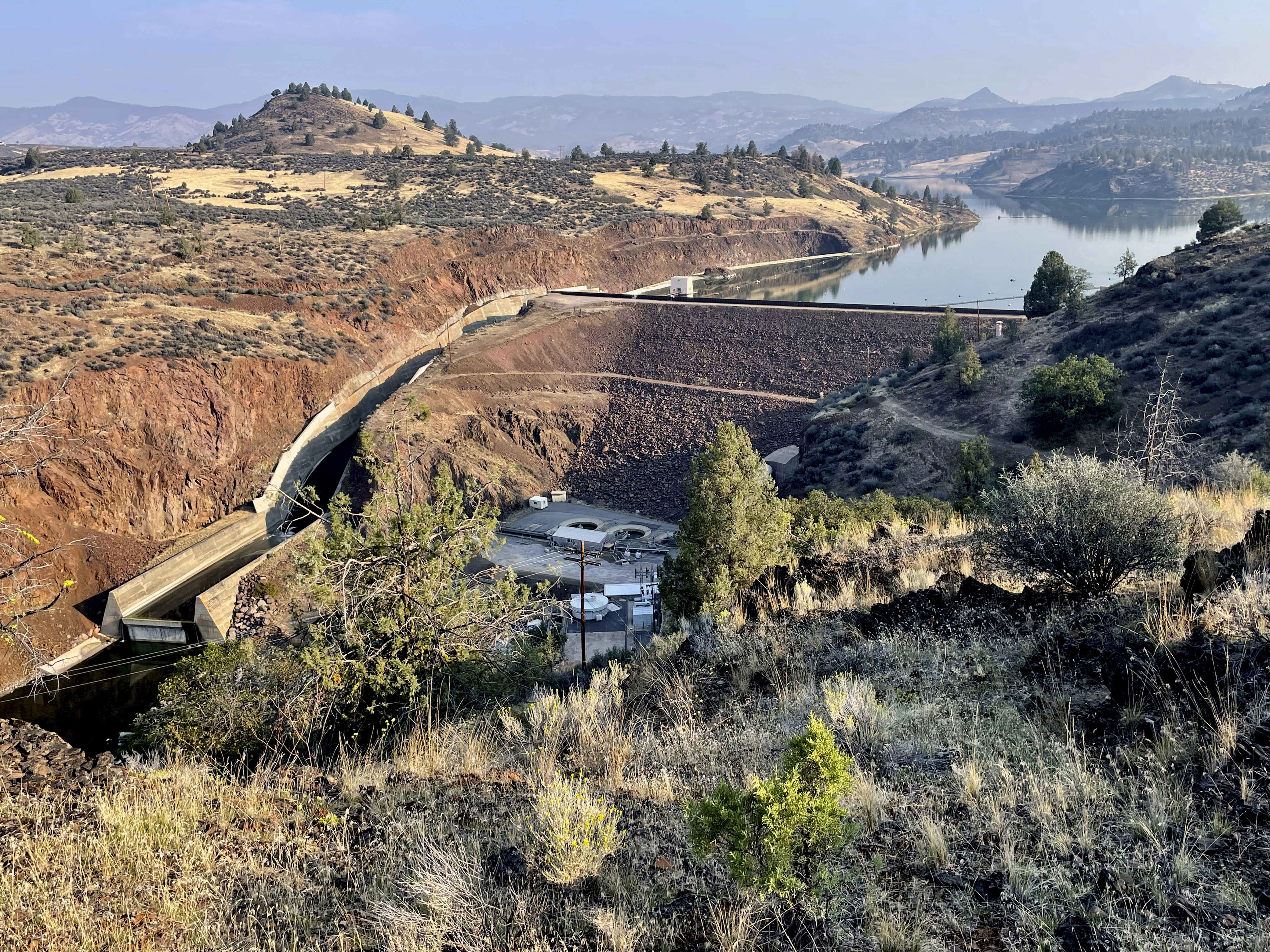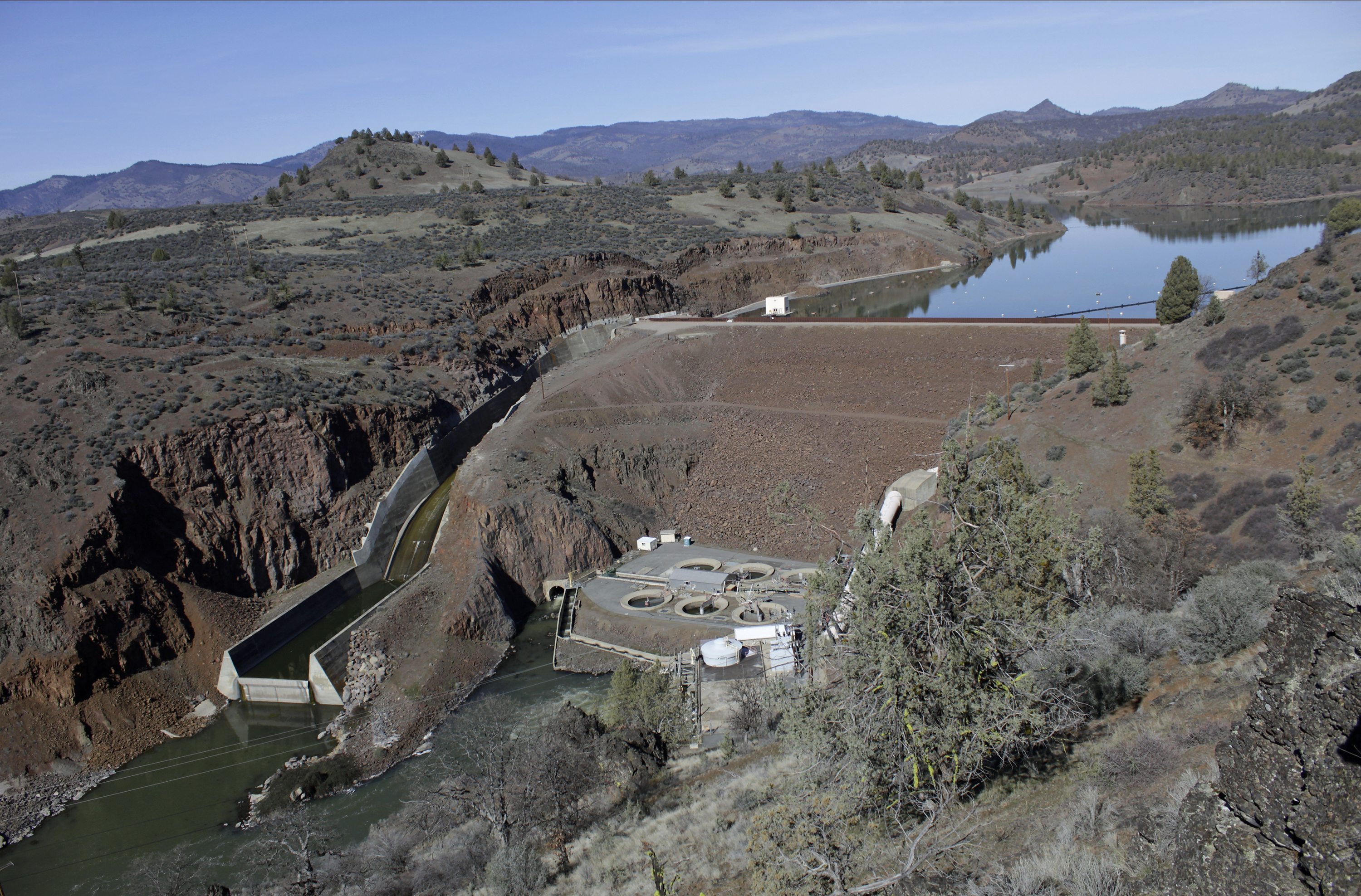In 1918, when the industrials seeking to harness Northern California’s Klamath River for hydroelectric power began erecting their first concrete dam against the steep canyon walls near the California-Oregon border, the tribal ancestors of Clayton Dumont registered their protest.
“It was during my great grandfather’s time that those dams went in,” Dumont said, standing on the frozen ground in Chiloquin, Oregon. “He was active in opposing them.”
Those cries against the damming of the Klamath seemed to flush like rain down the river’s chilly currents as the work pushed ahead without input from the tribes. Their worst fears about the health of the river were realized almost immediately. With the building of the first dam, Copco #1 in 1918, the robust chinook salmon runs that sustained tribes and other fishing interests began to quickly vanish as hundreds of miles of upper habitat were sealed off behind the first concrete fortress. By the 1960s, four dams would lord over the river near the town of Yreka.
“There were massive runs before and there was zero afterwards,” said Dumont, tribal chairman for the Klamath Tribes. “Nobody left alive can remember a salmon run up here.”
Get a weekly recap of the latest San Francisco Bay Area housing news. Sign up for NBC Bay Area’s Housing Deconstructed newsletter.
Just a few miles from Dumont’s office in southern Oregon sits Klamath Lake, the upper origin of the Klamath River, which navigates through Northern California – clawing through forested plateaus, past opulent homes, shacks, pastures and ramshackle towns on its march toward the Pacific Ocean near Crescent City.
Up until last summer, the waters of the humbled river traversed a total of four hydroelectric dams built between 1918 and 1962. In the times before the dams were built, the Klamath was California’s third highest salmon producing river. Scientists estimate millions of fish made their way up and down its cold flows — sustaining tribes like the Karuk, Modoc and the Yurok, whose tribal land sits at the coastal intersection where the Klamath joins the Pacific Ocean.
“It’s a part of who we are, and we believe we evolved beside that river,” said Barry McCovey Jr., fish biologist with the Yurok Tribe in the town of Klamath. “It’s woven into the fabric of our being.”
For decades, the drumbeats calling for the removal of the four dams owned by energy giant PacifiCorp were faint. But the 2002 die-off of 70,000 salmon caused by a fish disease nurtured by the dams’ low flows turned the cries for demolition into a chorus.
“That really galvanized the community,” said McCovey Jr. “People said, ‘We have to do something about this. This can never happen again.’”
The coalition calling for the dams' destruction would unite tribes with environmental groups and the states of Oregon and California in pressuring PacifiCorp to tear the dams down.
“There were other political leaders at the time that fought hard – at one point even traveled to Scotland to meet with the dam ownership," recalled Dumont.
The removal of the dams became reality through the 2016 Klamath Hydroelectric Settlement Agreement in which PacifiCorp agreed to demolish all four dams and unharness the river for the first time in over a century. The work to reverse the damming of the Klamath is now underway.
Last summer, crews took heavy machinery and pounded the small diversion dam known as Copco #2 near Yreka into memory. Ren Brownell, spokesperson for the Klamath River Renewal Corporation — the nonprofit organization overseeing the dam removal — stepped gingerly down the steep canyon, walking among the boulder-covered river banks to point out where the dam once stretched across the river. In place of the concrete wall, the river trickled through the canyon as though it had never been dammed at all.
“I think it was really inspirational for me the first time I got to come down here and see the river free flowing for the first time,” said Brownell, standing just feet from the Klamath’s waters.
On Jan. 4, 2024, KRRC will begin the next key phase by draining the reservoirs behind the three remaining dams: Copco #1, JC Boyle and Iron Gate Dam. The group will utilize a tunnel beneath the imposing earthen Iron Gate Dam to “draw down” the water level, which will take about two months – turning scenic Copco Lake into a river, much to the chagrin of dozens of residents whose homes currently enjoy lakefront vistas.
Then, next summer the work to tear out the final three dams will commence. It’s estimated by next November all traces of the four dams will be gone and the river unfettered for the first time in generations. Tribal naturalists have collected 13 billion native seeds and will begin replanting the river beds once the dams are gone.
On lands where the Yurok Tribe holds a festival each year to celebrate the salmon, McCovey hopes the salmon recovery will come as quickly as their demise.
“There’ll be more habitat for them to spawn in, there’ll be more habitat for the juveniles to rear in,” he said. “So, that’ll just increase the carrying capacity of the river.”
At the upper end of the Klamath, Dumont also expressed satisfaction that the stark reality once proselytized by his great-grandfather about the evils of the dams had finally been acknowledged by the powers.
“Our people are really, really excited about getting salmon back up here,” Dumont said.
Inside the Klamath Tribe Administration Building, Dumont pointed out historic photos showing tribal members paddling canoes on the river’s tributaries. Modern photos showed the tribe holding ceremonies along the water’s edge, emphasizing the central importance the river still plays in the lives of the Klamath’s residents.
The impact of the dam removal will reverberate all down the river and out to the ocean where commercial and recreational fishing interests endured a complete closure of the salmon fishing season for only the second time in history due to a low number of fish in the ocean.
For Dumont, the effort by the tribes to bring down the dams is a way of mending the ills of the past but also healing the river for the times to come.
“We are remarkably resilient, particularly in the way we think about time,” Dumont said. “A few generations is nothing for us. We’re taught to think seven generations into the future and think about how what we do will impact them.”



